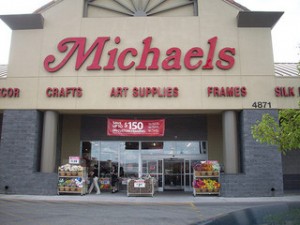How Many Workers Is the Right Number for a Retailer? Stories from Trader Joe's, Michaels, and Whole Foods
A reader named Quinton White points us to an interesting article by Jim Surowiecki in The New Yorker about how retail firms are succeeding by hiring more workers and spending more money training and rewarding them. Surowiecki writes:
A recent Harvard Business Review study by Zeynep Ton, an M.I.T. professor, looked at four low-price retailers: Costco, Trader Joe’s, the convenience-store chain QuikTrip, and a Spanish supermarket chain called Mercadona. These companies have much higher labor costs than their competitors. They pay their employees more; they have more full-time workers and more salespeople on the floor; and they invest more in training them. (At QuikTrip, even part-time employees get forty hours of training.) Not surprisingly, these stores are better places to work. What’s more surprising is that they are more profitable than most of their competitors and have more sales per employee and per square foot.
The entire article is worth reading. It made me think of a retail experience I recently had in the opposite direction, and what that experience may say about that retailer’s prospects.
Are you familiar with the Michaels craft-store chain? No, I didn’t used to be familiar with it either. But I now have a 10-year-old daughter who loves to do crafty projects and as it happens, a Michaels opened up recently within walking distance. So we spend a lot of time there.
One problem: the checkout line is always really, really long. One Saturday I went with my daughter to buy something and the line was so long — maybe 40 people, moving slowly — that we left. Then, a couple of days later, I popped over by myself, on a weekday afternoon, to get the stuff my daughter had wanted.
And the line was still long! Maybe only 15 or 20 people this time but too long for me to wait. I did, however, seek out the manager. I told her I was happy her store had such huge demand but why, even on a weekday afternoon, do you make it so hard for people to put money in your hands? Isn’t that the objective of running a store?
I was surprised when, instead of offering a pro forma apology, she began to explain how frustrated she was with the situation. She said it drove her crazy to see that line of customers waiting to pay and to see people like me leaving because of the line.
She explained that the problem is rooted in Michaels’ corporate headquarters in Texas. She said that every store in the chain (there are more than 1,000) has a “payroll bucket” from which to pay cashiers and, if my memory serves me correctly, each store’s payroll bucket is based on the store’s square footage.
The problem with this store, she said, is that it takes in a lot of money per square foot because this is Manhattan, where square feet are scarce but where customers aren’t. In fact, she said, this new store had immediately become one of the most profitable stores in the chain. And yet she couldn’t shake free any more payroll money (yet, at least — she said she’d been trying hard) because of the existing square-footage/payroll formula. She said she wanted more money to not only hire more cashiers but also to build more registers.
I hope she gets her way. It seems a shame for a successful store in a chain to not be able to maximize its profits, and to best serve its customers, simply because of a formula that works in some places but doesn’t work in others.
Of course I have no way of knowing if everything she told me is accurate. But it was an interesting conversation especially in light of the bigger question that Surowiecki wrote about.
FWIW, critics — especially Democratic critics — may note that Michaels is a chain that went public a long time ago, expanded widely, and was taken private in 2006 when it was acquired by two investment firms: the Blackstone Group and, yes, Bain Capital.
Also FWIW: one of the reasons I find shopping at Whole Foods so pleasurable is that there are so many employees — who, it appears, are trained to physically escort you to an item if you can’t find it. So while I may pay a few pennies more on the dollar for something at Whole Foods (or maybe not), in part because of higher labor costs, at least the labor costs directly translate into a superior customer experience.


Comments